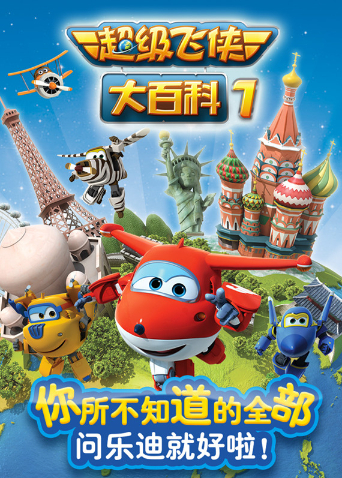影片改编自菲利普·罗斯2008年出版的同名小说,亚洲故事围绕上世纪50年代美国一名犹太裔男青年马科斯·梅思纳的苦闷与彷徨展开。
影片改编自菲利普·罗斯2008年出版的同名小说,亚洲故事围绕上世纪50年代美国一名犹太裔男青年马科斯·梅思纳的苦闷与彷徨展开。

回复 :一群东南亚偷渡客历经艰险来到韩国,但是整个集装箱内的偷渡客几乎全部死亡,只有一人拖着羸弱的身体侥幸逃入闹市之中。殊不知此人身上携带致命猪流感病毒,短短一天时间,病毒迅速蔓延城市的各个角落。许多人在不知不觉间被感染,进而将死亡的阴影引向周围所有的人。美丽的女医生金仁海(秀爱 饰)是一位单身妈妈,她不久前遭遇一场车祸,幸被消防队救援人员姜智久(张赫 饰)救出,却因丢失重要论文资料而备受上司苛责。值此期间,韩国蛇头的弟弟因流感送入仁海的医院治疗,经诊断终于发现流感的起因,死尸横陈的集装箱无疑成为查找病源的关键。未过多久,猪流感病毒成几何式爆发蔓延,坐享太平的民众面临前所未有的灾难……
回复 :本杰明·芬恩·费尼根(马修·麦康纳 Matthew McConaughey 饰)是一名疯狂的淘金猎人,淘金的热情使他无法如常人一般找份像样的工作养家糊口,他的妻子苔丝(凯特·哈德森 Kate Hudson 饰)也向他提出离婚,并在千万富翁奈杰尔(唐纳德·萨瑟兰 Donald Sutherland 饰)的巨轮上找了份不错的工作。一次意外的沉船事故中,芬恩无意中发现一枚碟子碎片,并推断这来源于一批失落了300多年的皇家财产,而这批财产同时也是他与妻子苦寻了8年的共同理想,芬恩决定这次决不放弃,然而周围却没有一个人相信他的推测。芬恩唯有想出了一个无厘头却不失精妙的方法登上了奈杰尔的船,并能言善辩地说服了杰奈尔与其女儿,甚至是苔丝也加入寻宝计划。然而与此同时,淘金团伙Bigg Bunny和芬恩的前导师已经盯上了他们,一场螳螂捕蝉黄雀在后的淘金好戏,即将上演……
回复 :Somewhere in the remote region, the war ends. In the midst of ruined cities and houses in the streets, in rural hamlets, everywhere where people still live, are children who have lost their homes and parents. Abandoned, hungry, and in rags, defenseless and humiliated, they wander through the world. Hunger drives them. Little streams of orphans merge into a river which rushes forward and submerges everything in its path. The children do not know any feeling; they know only the world of their enemies. They fight, steal, struggle for a mouthful of food, and violence is merely a means to get it. A gang led by Cahoun finds a refuge in an abandoned castle and encounters an old composer who has voluntarily retired into solitude from a world of hatred, treason, and crime. How can they find a common ground, how can they become mutual friends? The castle becomes their hiding place but possibly it will also be their first home which they may organize and must defend. But even for this, the price will be very high.To this simple story, the journalist, writer, poet, scriptwriter, movie director, and film theoretician Béla Balázs applied many years of experience. He and the director Géza Radványi created a work which opened a new postwar chapter in Hungarian film. Surprisingly, this film has not lost any of its impact over the years, especially on a profound philosophical level. That is to say, it is not merely a movie about war; it is not important in what location and in what period of time it takes place. It is a story outside of time about the joyless fate of children who pay dearly for the cruel war games of adults.At the time it was premiered, the movie was enthusiastically received by the critics. The main roles were taken by streetwise boys of a children's group who created their roles improvisationally in close contact with a few professional actors, and in the children's acting their own fresh experience of war's turmoil appears to be reflected. At the same time, their performance fits admirably into the mosaic of a very complex movie language. Balázs's influence revealed itself, above all, in the introductory sequences: an air raid on an amusement park, seen in a montage of dramatic situations evoking the last spasms of war, where, undoubtedly, we discern the influence of classical Soviet cinematography. Shooting, the boy's escape, the locomotive's wheels, the shadows of soldiers with submachine guns, the sound of a whistle—the images are linked together in abrupt sequences in which varying shots and expressive sharp sounds are emphasized. A perfectly planned screenplay avoided all elements of sentimentality, time-worn stereotypes of wronged children, romanticism and cheap simplification. The authors succeeded in bridging the perilous dramatic abyss of the metamorphosis of a children's community. Their telling of the story (the scene of pillaging, the assault on the castle, etc) independently introduced some neorealist elements which, at that time, were being propagated in Italy by De Sica, Rossellini, and other film artists. The rebukes of contemporary critics, who called attention to "formalism for its own sake" have been forgotten. The masterly art of cameraman Barnabás Hegyi gives vitality to the poetic images. His angle shots of the children, his composition of scenes in the castle interior, are a living document of the times, and underline the atmosphere and the characters of the protagonists. The success of the picture was also enhanced by the musical art of composer Dénes Buday who, in tense situations, inserted the theme of the Marseilaise into the movie's structure, as a motive of community unification, as an expression of friendship and the possibility of understanding.Valahol Europaban is the first significant postwar Hungarian film. It originated in a relaxed atmosphere, replete with joy and euphoria, and it includes these elements in order to demonstrate the strength of humanism, tolerance, and friendship. It represents a general condemnation of war anywhere in the world, in any form.
